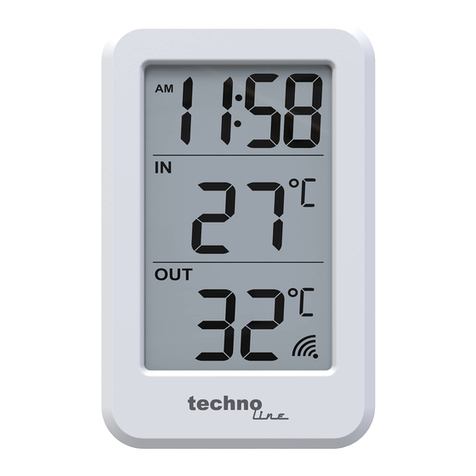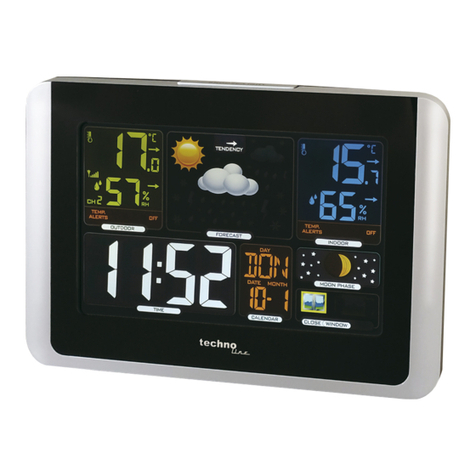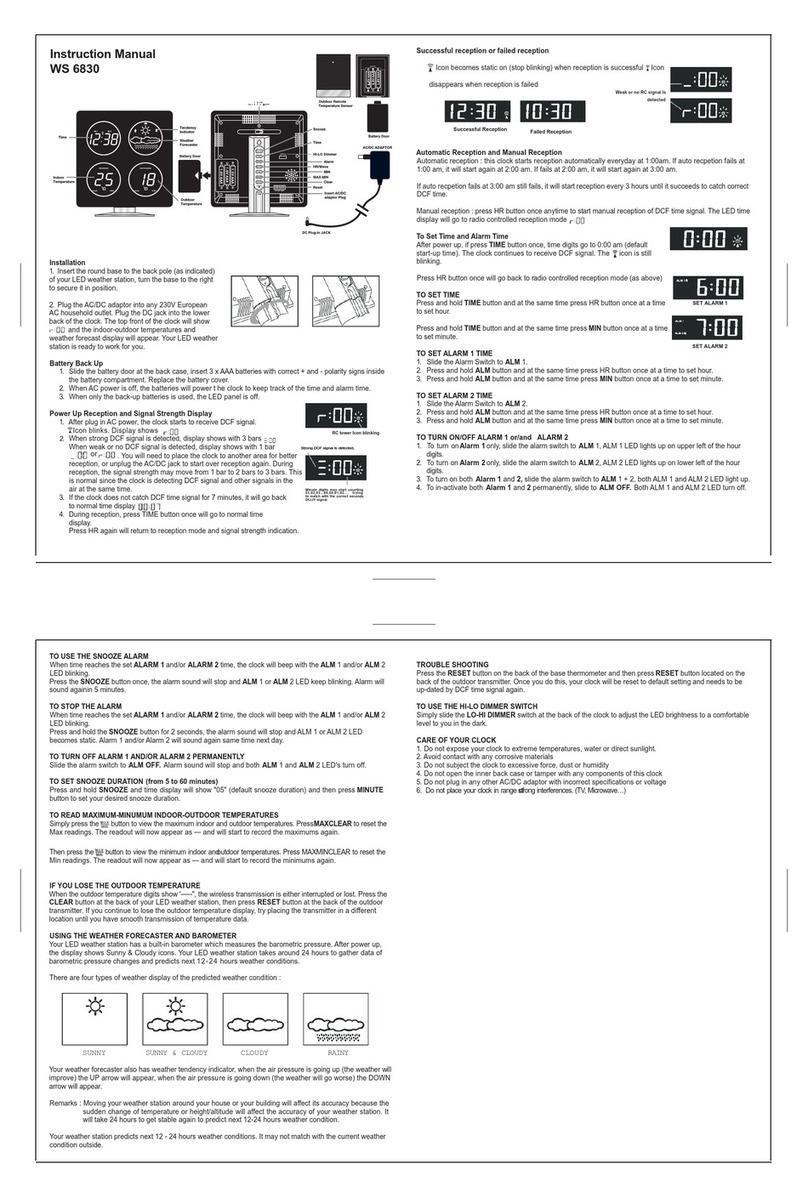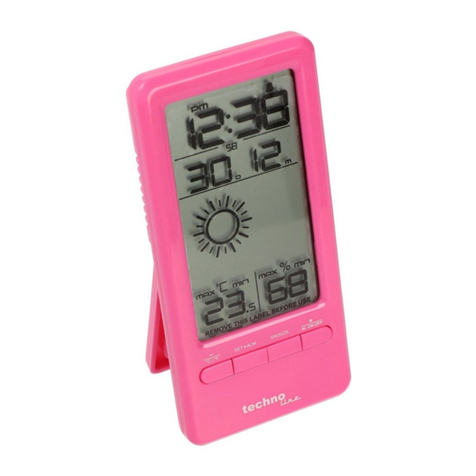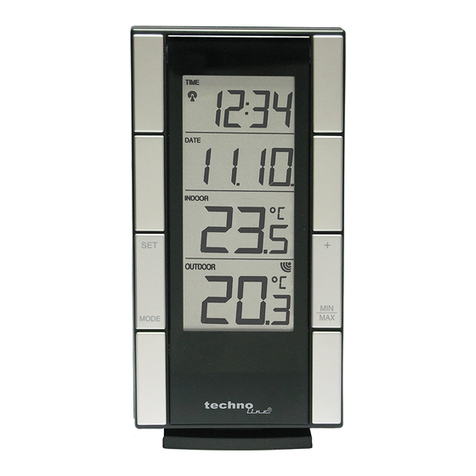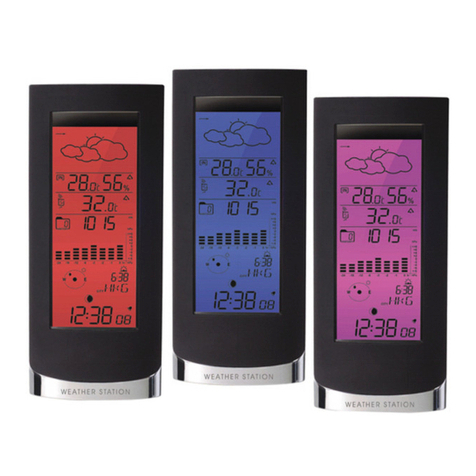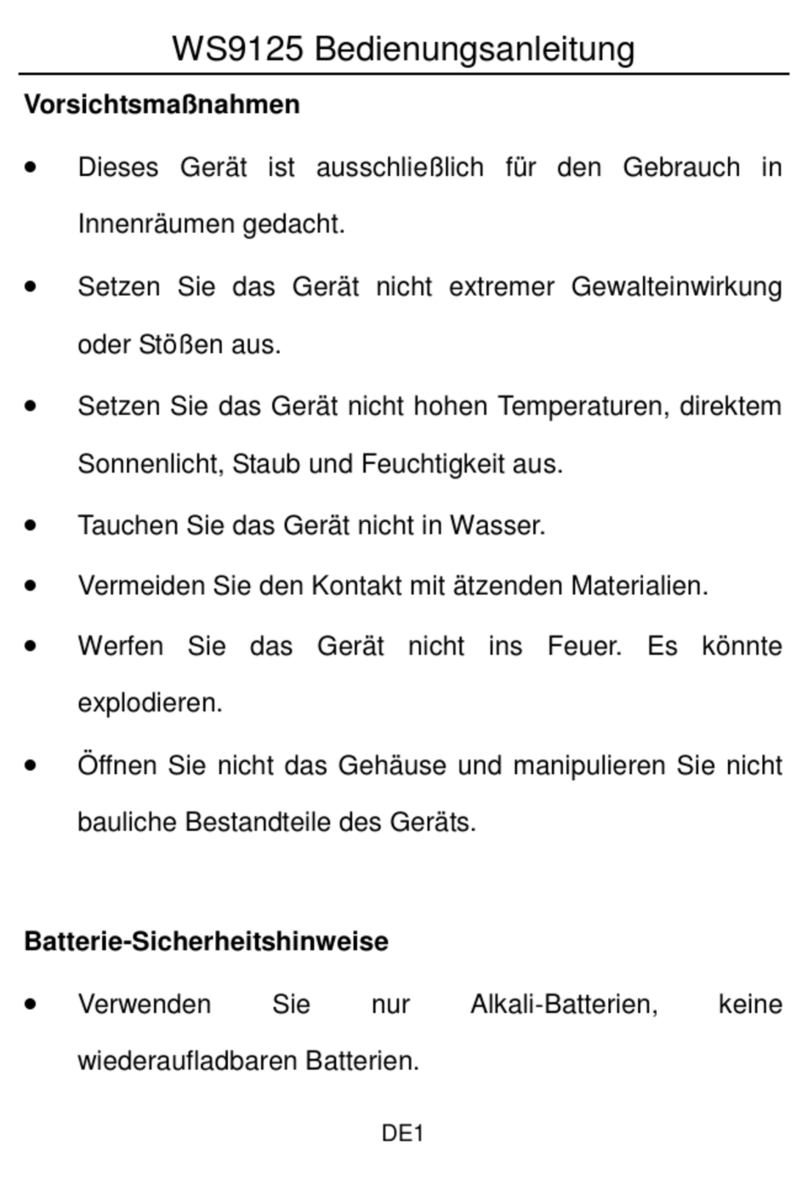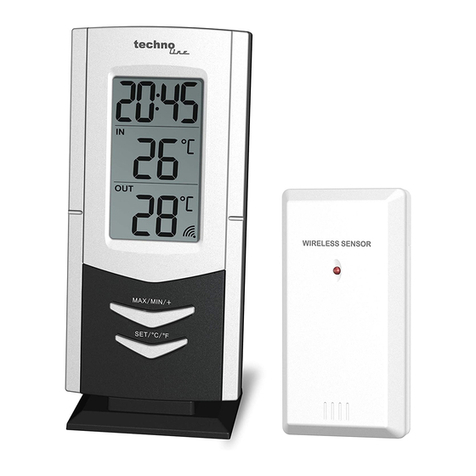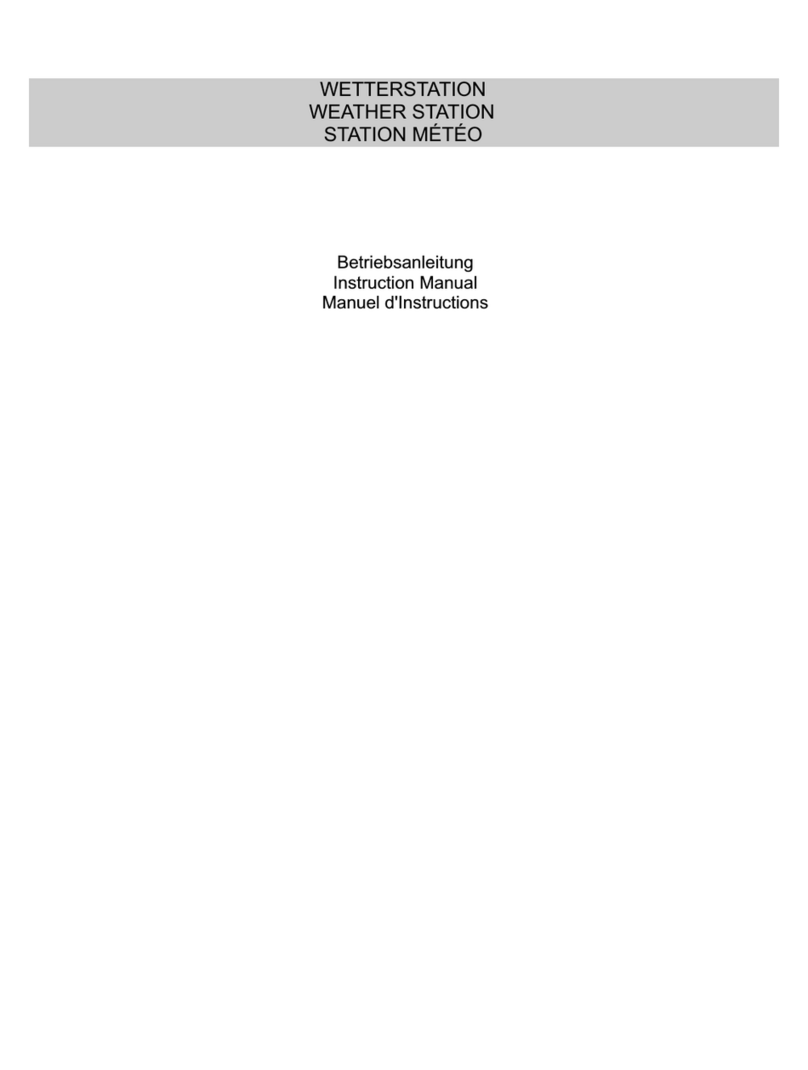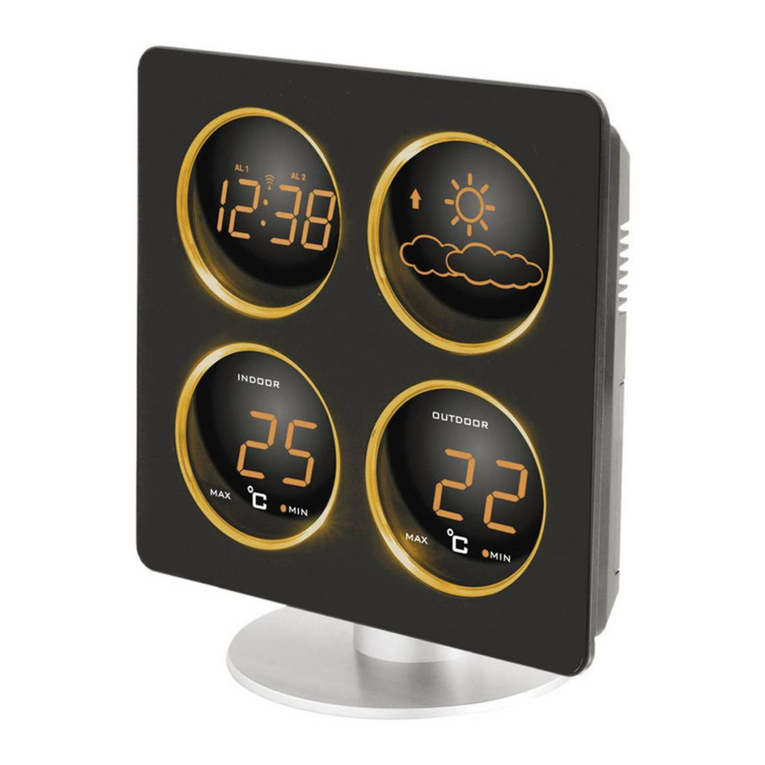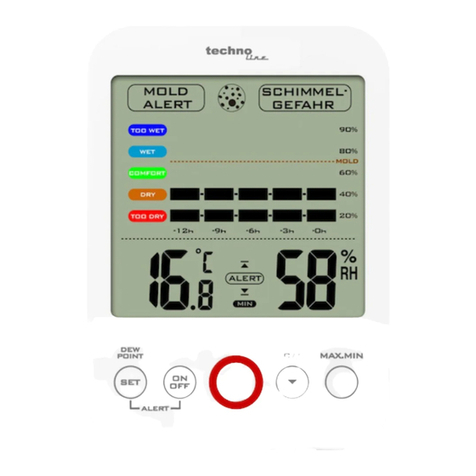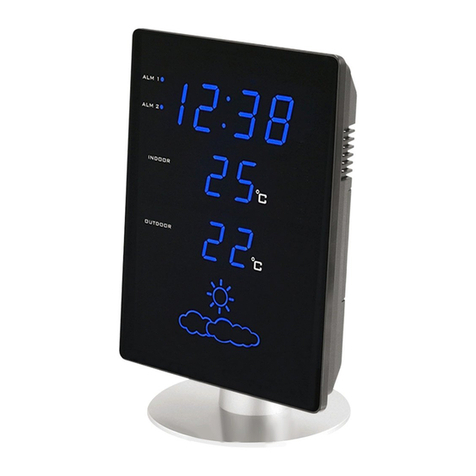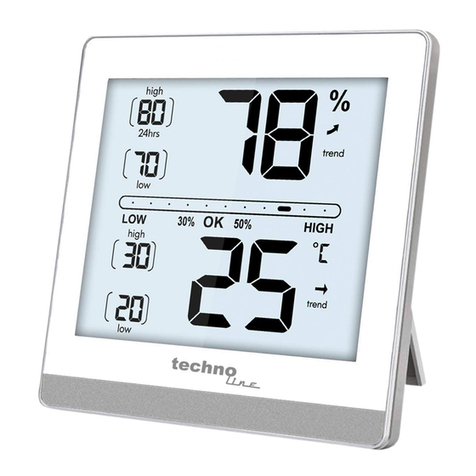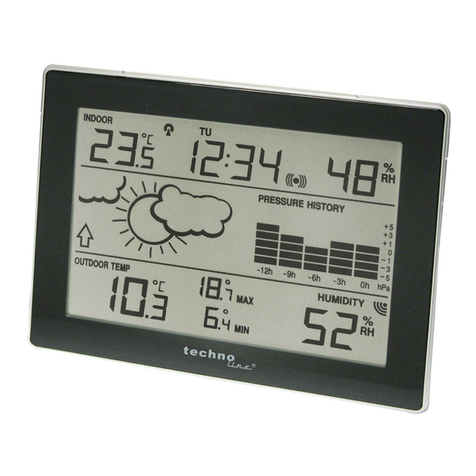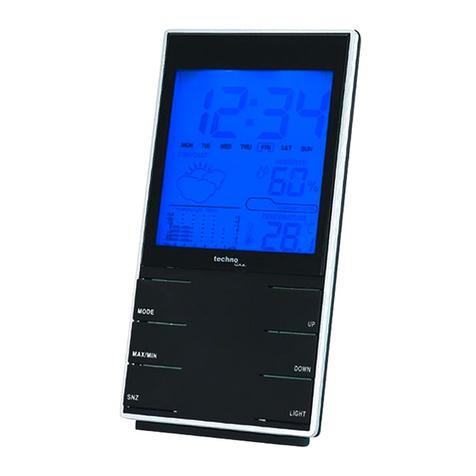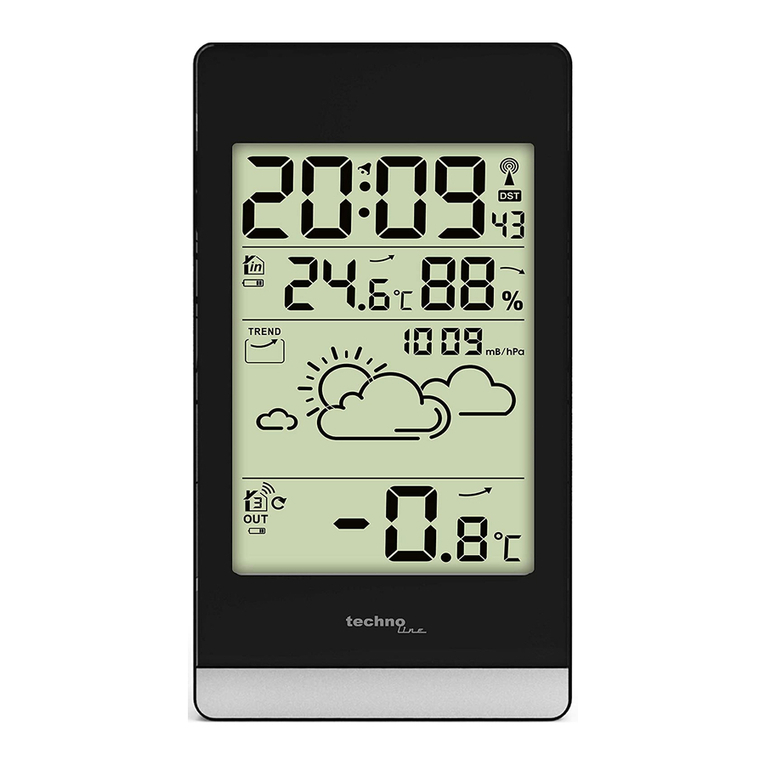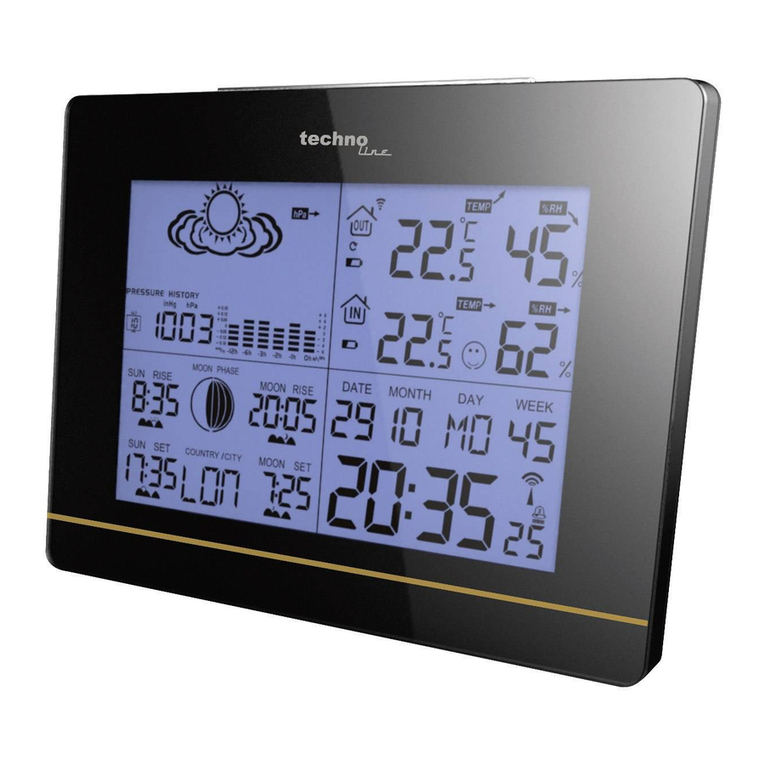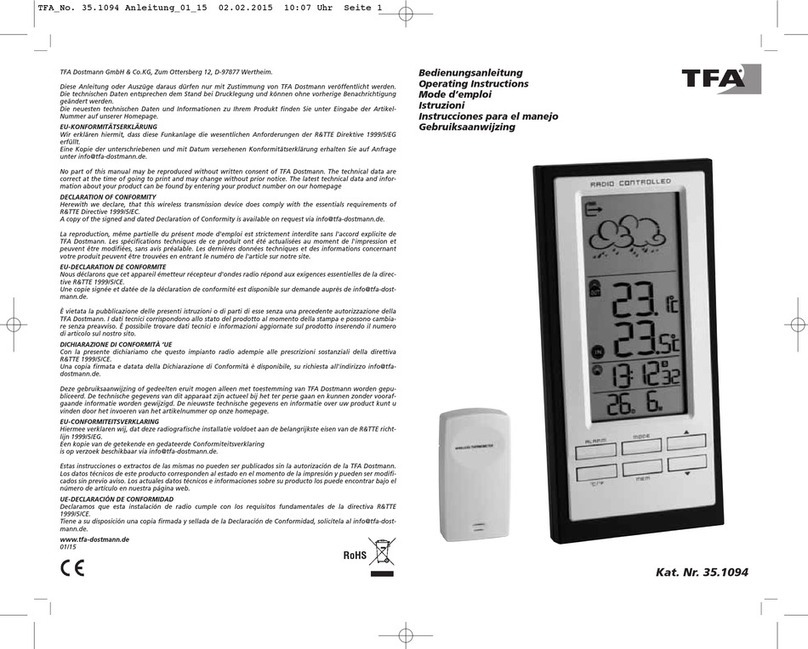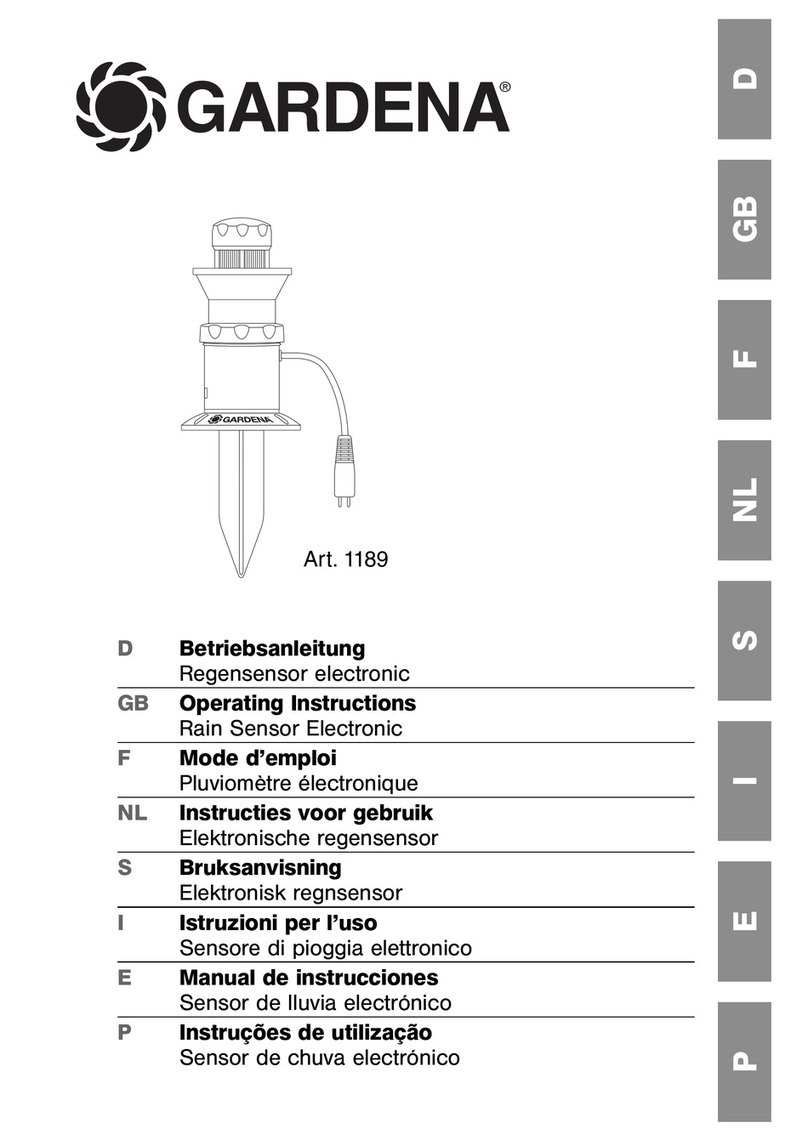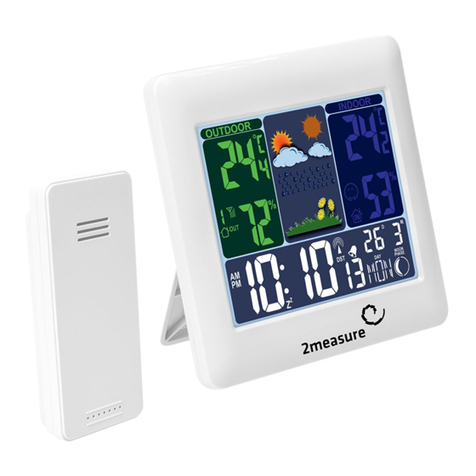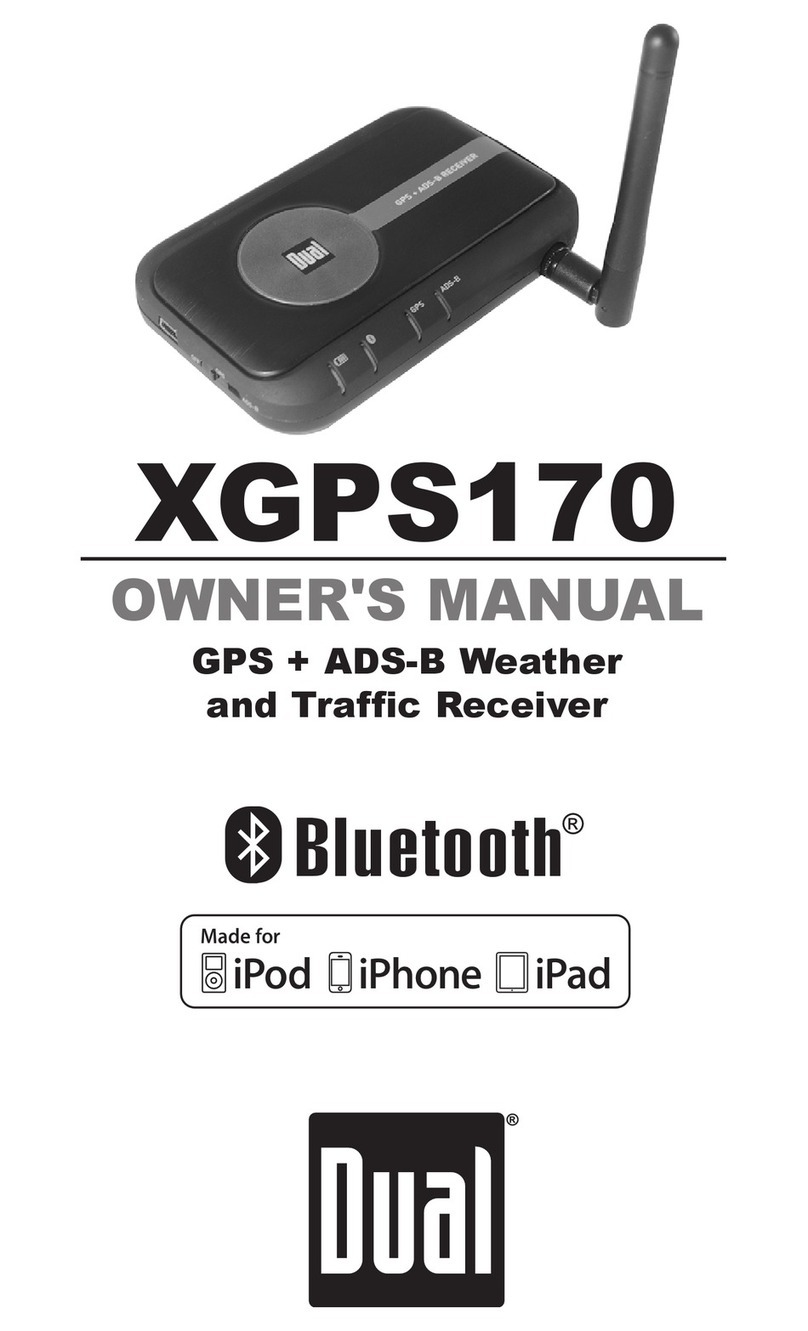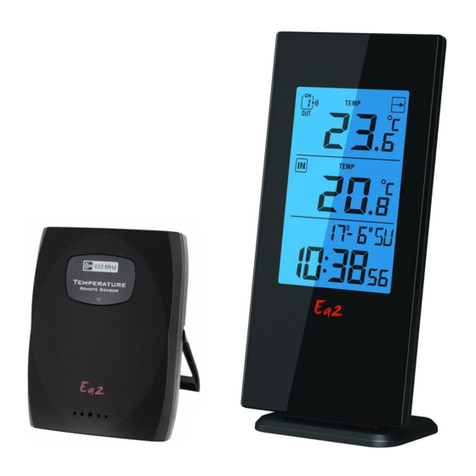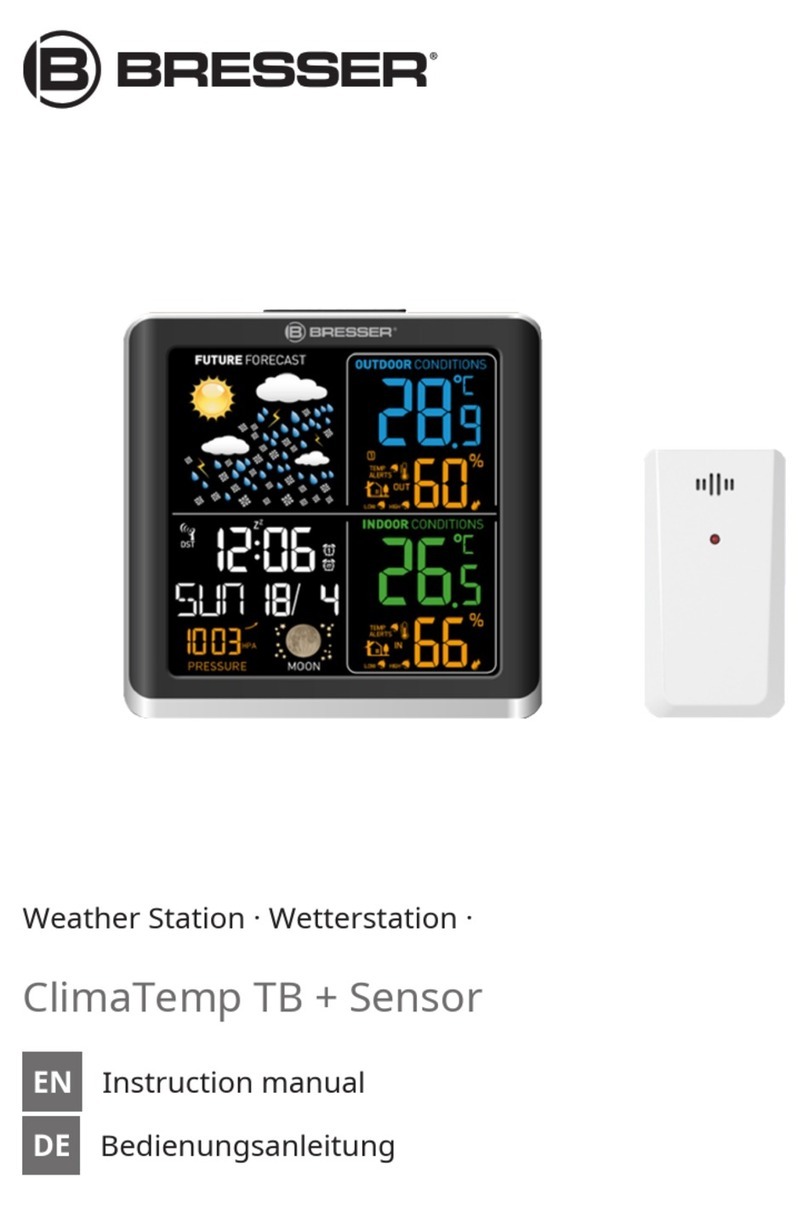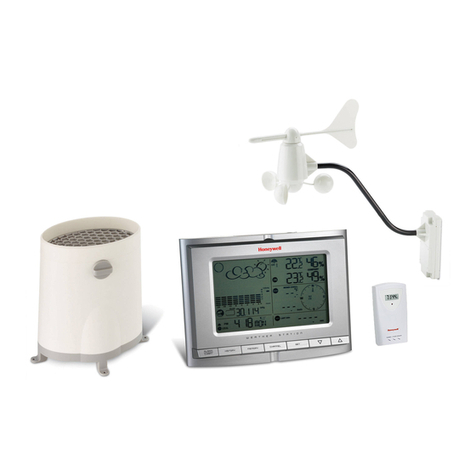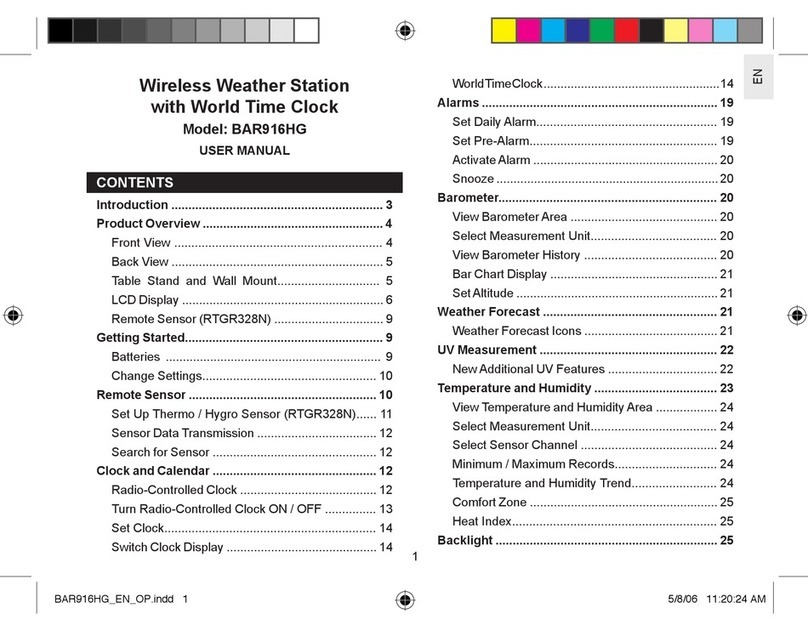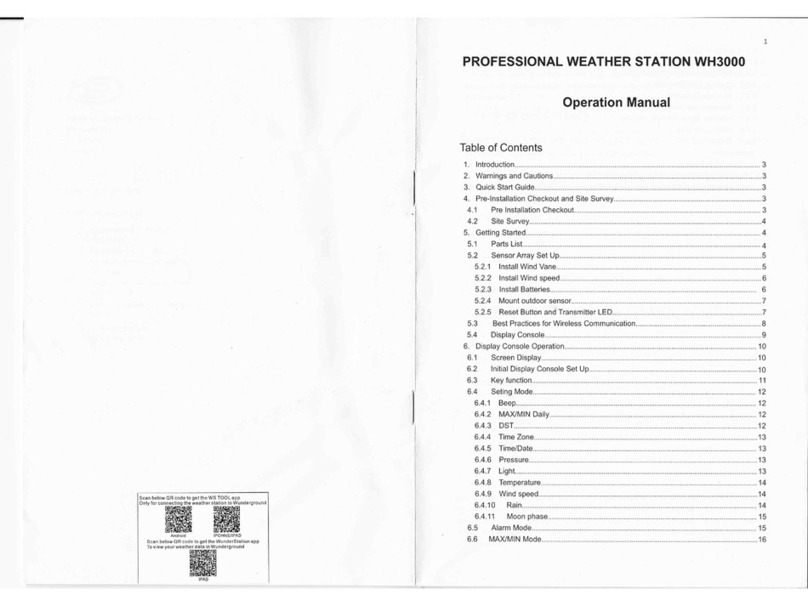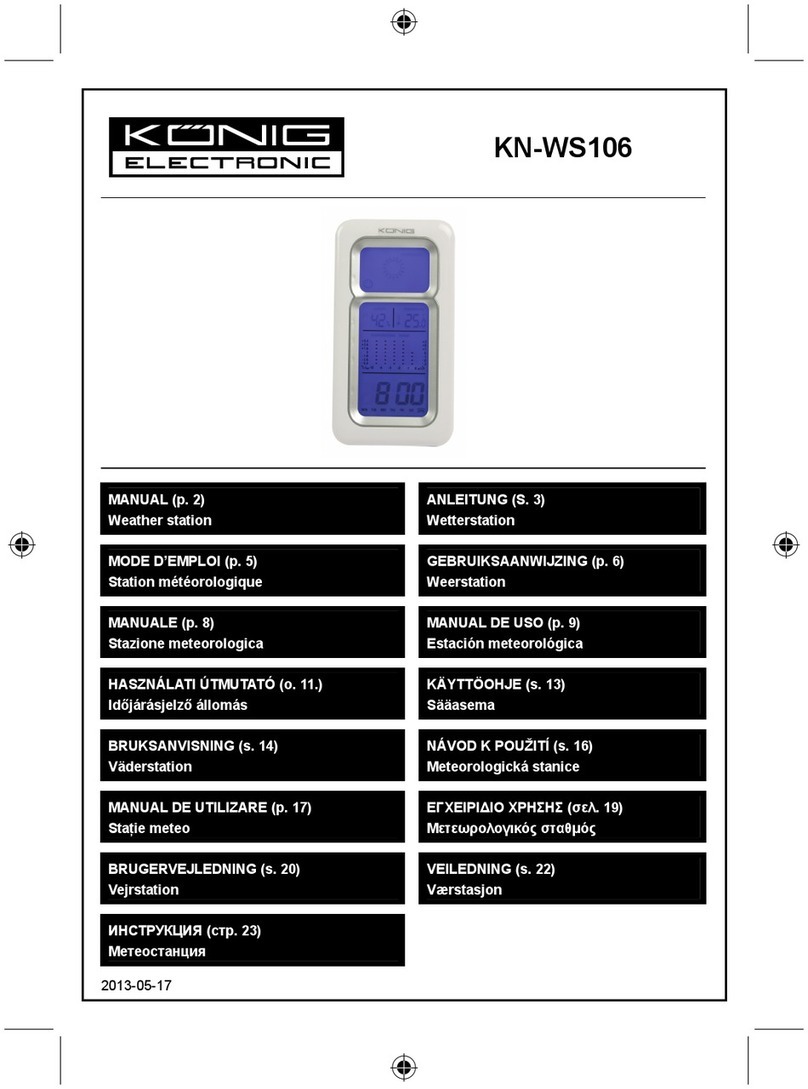Batteries installation
1. Open batter compartment on the back of the unit b removing the two small
screws (RTS 2) with a Philips head screwdriver. (see figure 4)
2. Install / replace with 2x “AAA” size batteries in the compartment. It is
recommended that onl alkaline batteries are used. Do not use rechargeable
batteries.
3. The weather station is capable of receiving up to 3 different channels. Select
the channel number (1, 2, or 3) b sliding the “Channel 1 2 3” switch (RTS 4).
If ou onl have 1 remote temperature sensor, select 1.
4. Press the “reset” button (RTS 3) once and the red light will flash once.
5. Replace the batter compartment on the back of the unit b tightening the
two screws (RTS 2).
Installation
1. Place the remote temperature sensor at a desired place b mounting the
unit’s hang hole (RTS 1) on a screw (screw not included). Alternativel , the
unit can be place on a flat horizontal surface.
2. The unit can be placed indoor or outdoor. The unit is weather proof. Do not
submerge unit in water. Do not expose unit to water for prolonged periods.
Avoid accumulation of water and or snow on unit. Avoid exposing unit to
direct sunlight. Remove unit from the exterior in extreme or harsh weather,
including but not limited to hurricane, t phoon, and c clones seasons. Do not
place the unit in area of high winds.
3. Do not place the remote temperature sensor more than 30 meters (98 feet)
from the receiving weather station. The remote temperature sensor is most
effective if there are no obstruction and interference between the remote
temperature sensor and the weather station. The remote temperature sensor
might have to closer than 30 meters if the weather station is not able to
receive an signals. This is due to obstructions and interference. The user
might need to experiment with various locations to get the best reception.
Configuring Weather Station to receive remote temperature signals.
1. Follow the above instructions to set up remote temperature sensor.
2. Press “CHANNEL” button (6) on weather station for 3 seconds. will flash.
This will reset all temperature memories.
3. The weather station will begin scanning for signals for channel 1. As soon as
signals are received for channel 1, the temperature will be displa ed. The
weather station will automaticall scans for the other channels. It will scan







